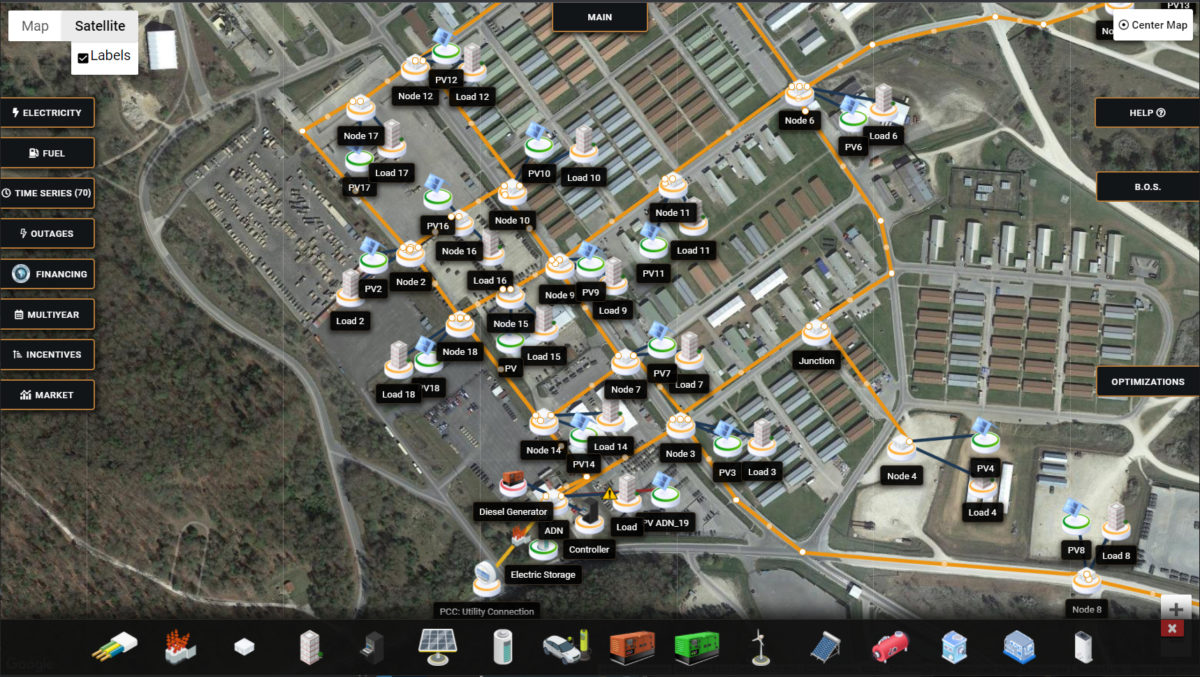The Department of Defense (DoD) is looking to microgrids to shore up resilience on military bases in the United States and abroad. Due to the growing threat of blackouts, the DoD, through its Environmental Security Technology Certification Program (ESTCP), has enlisted Xendee, a provider of microgrid development software, to help cut energy system engineering costs.
Xendee’s software is demonstrated at three DoD installations. At the Naval Submarine Base Kings Bay in Georgia, a project design focus is resilience against outages, and another initiative was examining the ongoing installation upgrades to determine feasibility, return and alternatives. For the USAG Bavaria project in Grafenwöhr/Vilseck, Germany, the focus included optimizing investment, placement, dispatch, financial analysis, power flow engineering and training for Army staff. The Naval Base San Diego used the Xendee platform to examine how an onsite microgrid installation could be more cost- and emission-efficient than running new cabling to the building.
To support these installations, Xendee partnered with Arizona State University to create a specialized curriculum designed to train service members on how to use the Xendee software. Xendee also completed DoD Cybersecurity Maturity Model Certification (CMMC), making it a cyber secure platform for DoD applications. The Xendee platform can model up to 25 different distributed energy resource technologies and calculates the optimal techno-economic solution for each site to meet organizational goals. These goals can include reducing costs, cutting CO2 emissions, increasing resilience, or a combination of all three.
Xendee’s platform assessed various of technologies at these installations: solar, battery storage, diesel generators, heat pumps, combined heat and power (CHP) engines, and cable and transformer upgrades. Xendee’s optimization engine analyzed and optimized the investment strategy taken, the sizing and placement of technologies, and the actual dispatch of the system over every time step of the year.
“Our primary objective was to train uniformed and civilian military personnel on a standardized, repeatable process for building and interpreting microgrid models,” said Nathan Johnson, Associate Professor in The Polytechnic School at Arizona State University and Director of the Laboratory for Energy And Power Solutions (LEAPS). “Additionally, by mapping the training program and certificates to military job codes, ASU and Xendee have created a pipeline for training and deploying DoD certified users at scale.” This effort extends a history of training provided by Arizona State University to installation personnel and transitioning Veterans.
Xendee recently announced an integration with UtilityAPI to offer engineers more accurate load data and emission profiles. The integration is meant to aid users in efficiently downloading past building load data directly from utilities, giving engineers more accuracy in past usage and peak project requirements. Xendee also unveiled its new multi-node feature for designing sustainable communities, large facilities, and utility-scale microgrids, which enables users to connect up to 25 different technologies to generate advanced microgrid designs applicable to real-world positioning.
This content is protected by copyright and may not be reused. If you want to cooperate with us and would like to reuse some of our content, please contact: editors@pv-magazine.com.









By submitting this form you agree to pv magazine using your data for the purposes of publishing your comment.
Your personal data will only be disclosed or otherwise transmitted to third parties for the purposes of spam filtering or if this is necessary for technical maintenance of the website. Any other transfer to third parties will not take place unless this is justified on the basis of applicable data protection regulations or if pv magazine is legally obliged to do so.
You may revoke this consent at any time with effect for the future, in which case your personal data will be deleted immediately. Otherwise, your data will be deleted if pv magazine has processed your request or the purpose of data storage is fulfilled.
Further information on data privacy can be found in our Data Protection Policy.